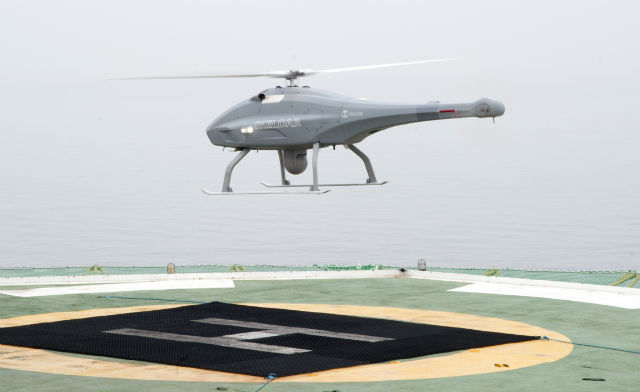The Skeldar unmanned helicopter will be provided to the European Maritime Safety Agency (EMSA) under a new services deal, marking the second sale of the system since manufacturer UMS Skeldar was formed in 2015.
Two Skeldars, each with their own ground control station, will be delivered to Martek Marine, which will then provide the UAV on a services basis to EMSA under a broad €67 million ($74.7 million) maritime UAV contract, $5 million of which covers the Skeldar delivery to Martek.
The UAVs will be used for border control, search and rescue, pollution monitoring, detection of illegal fishing, and drug/people traffic surveillance, flying behind vessels to carry out much of this work.

The first aircraft for this requirement will begin test flying in July. It will be the second example delivered following Indonesia’s acceptance of one system at the end of 2016, the first success since the business unit was formed.
A previous contract was also awarded for ship engine emissions monitoring, for which Martek will deploy the Skeldar.
UMS Skeldar has also signed a memorandum of understanding with Sentient to explore integration of the Visual Identification Detection and Ranging (ViDAR) sensor on to Skeldar. Up to eight cameras can be integrated on to the helicopter, providing between 180° and 360° field of view.
“This is a very exciting move for us and Sentient,” says David Willems, head of business development for UMS Skeldar. “We are studying where is the best position to integrate those sensors.”
Under the terms of the agreement, two ViDAR will be integrated for test flying in Sweden, the first later this year. ViDAR can provide simultaneous wide-area and search functions, and is also being offered as an option for the Insitu ScanEagle fixed-wing UAV.
Get all the coverage from the Paris air show
Source: Flight Daily News






















